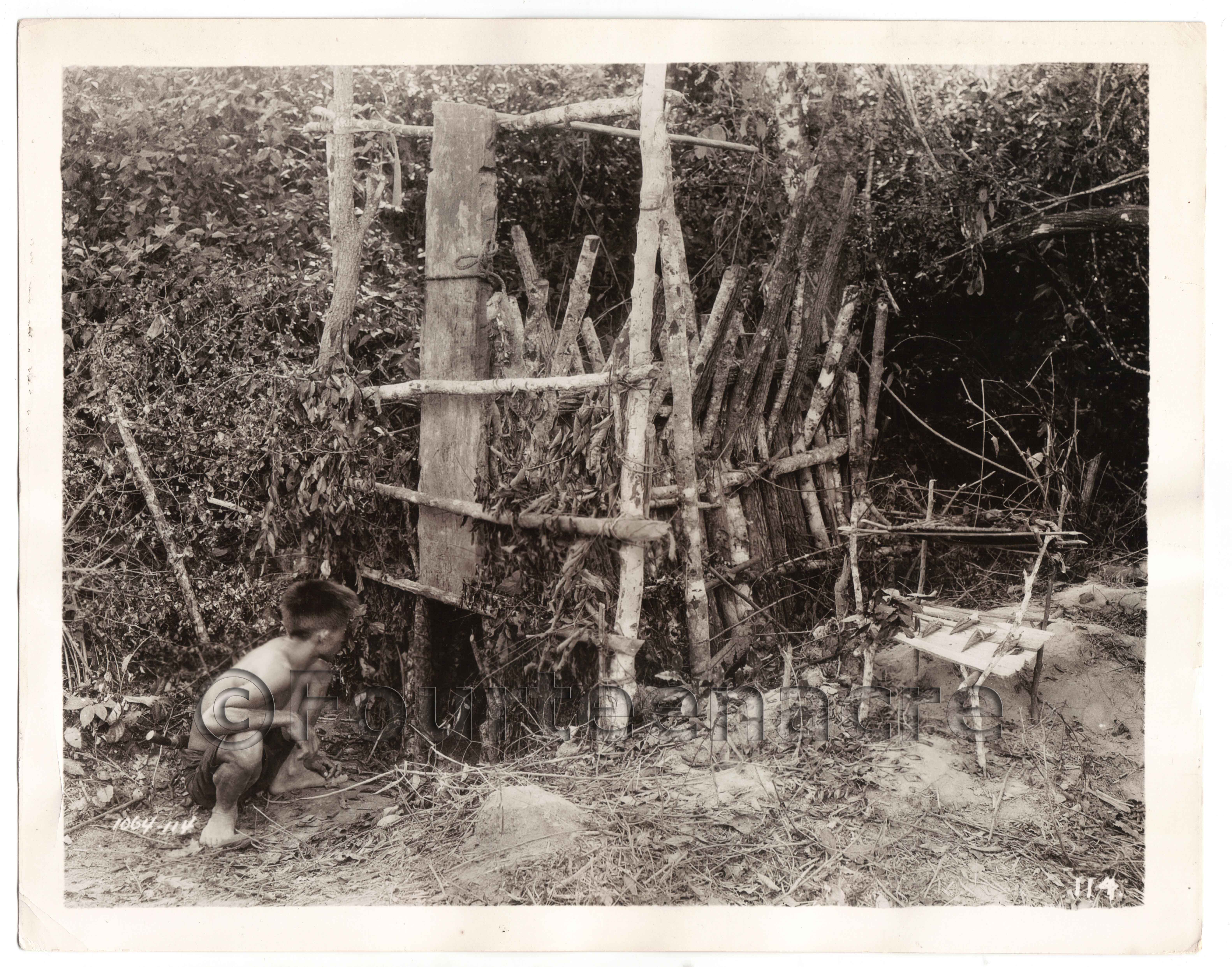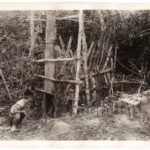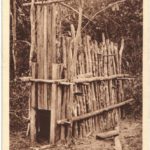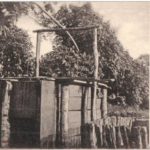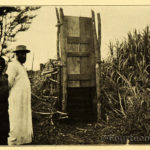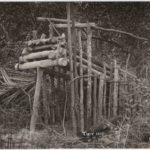Description
This is a collection of simple wooden ‘cage’ traps made by local tribesman around the world. It’s not clear if these were ever for catching rogue animals that were a danger to local people. What is probably more likely, is they were used more for catching animals for zoos or the unsavoury practice of managed hunts.
What is interesting though is the simple mechanics of the traps and the use of the raw materials available to hand.
Trap 1 is a very good photograph of a traditional jungle tiger trap, built from natural materials found in the jungle. There is a small table to the right of the trap with a few artefacts on it which suggests that when this photo was taken the trap was already being used for tourist display. The text on the rear of the photo reads: Tiger trap in the jungle. The tiger enters the trap after bait of dog or pig, steps on a treadle which releases a trigger, the door drops and he is trapped. It was in such a trap as this that Mr. Cooper and Schoedsack caught many wild animals. Now I don’t think it can be a coincidence that Merian Cooper and his longtime associate Ernest Schoedsack (both real-life adventurers and film documentarians), directed and produced the 1933 film King Kong.
Trap 2 uses a familiar ‘sluice gate’ door held up by a long pole over a pivot rail. The far end of the pole would have had a cord attached going into the trap, attached either to the bait or to a treadle of some sort. You can see from the photograph that this is a permanent trap – the sides made from lengths of branches hammered into the ground. All the cross pieces and supports are pegged together using wooden wedges.
Traps 3 and 4 show leopard traps from the Congo and Uganda. These leopard traps use the same trap mechanism – the sluice gate with the long bar to hold the door open. What’s different here is the construction, planks rather than branches, but the basic principle is the same.
Trap 5, a Tiger trap from Singapore shows a quite different design. Here the whole top of the trap is moveable with an extended overhand at the front. When triggered this top section falls and traps the tiger closely.
- Trap 1
- Trap 2
- Trap 3 – A Leopard trap from the Congo
- Trap 4 – a Leopard Trap from Uganda
- Trap 5 – a tiger trap from Singapore
